SIM Information & Verification System (short code 668)
Description
The aim of the service was to develop a software-based system that would provide an Internet and SMS based interface to end-users in order to retrieve the registered mobile SIM(s) information, which is very rare in public sector. A mobile based mechanism information system that receives CNIC number as a primary input, performs rapid database search and answers back the total number of SIM(s) registered with each mobile operator. The system can handle large volume of search queries at a given time. The system provides intelligible interface, compact connectivity with back-end database and 24/7 operational performance. The system has been hosted at PTA Headquarters premises. This concept has been appreciated at various renowned national and international forums like GSMA and other countries are also following this concept like, one of the example is Turkey which is working on the same pattern
What we deliver
Detail of the SIMs registered to user’s National Identity Card through SMS or web access. Assurance and confidence to the mobile subscriber that the SIM the user is using is registered against his CNIC and no false SIM is registered against his CNIC
Whom we deliver
All mobile phone users in Pakistan. Total 43.5 Million SMS hits have been observed to-date
Why is the project unique?
This project is not only beneficial for the general public but this project become vital security information to law enforcement agencies, enabling Government and law enforcement agencies to locate and monitor actual subscriber of the mobile phone, as SIMs are now registered to actual user of the SIM having valid CNIC numbers. Hence this project is unique and one of its kind in the region.
Roadmap
With constant pressure to achieve greater efficiency, humans have continued to discover new technologies for ways to leverage competitive advantage. Probably the most fascinating addition has been the ‘No wires – No restriction’ phenomena brought in by the wireless communication technologies. Coupled with an added advantage of mobility, today’s wireless networks have provided an ability to access information and data remotely, and to conduct a whole bunch of amazing stuff anywhere, anytime. The kind of technological progression observed in the wireless arena is simply miraculous, where the next upgrade is already in planning while its predecessor is still being deployed. The statement seems to hold true for the next generations of wireless networks as well. Wireless telecommunications have transformed the way we communicate, access data, do business and seek entertainment. A rapidly growing list of examples shows how individuals and groups in developing economies are utilizing mobile phones in creative, valuable and supportive ways: price discovery in fishing villages; coordinating humanitarian relief; and paying utility bills while working in the wheat fields. In most parts of the developing world, the regulatory, administrative, business and technology communities have all joined hands to achieve a wireless revolution that no one would have thought possible – or perhaps even desirable – at the beginning of the decade. Today, in many poor countries, most of the population may not have access to basic life necessities, hygienic living conditions and quality education. However, they are likely to have access to a wireless phone and network coverage at affordable tariffs. By eliminating limitations of time and location, wireless is enabling a brighter future for people in developing countries. While analyzing the growth of mobile telephony we observe an amazing escalation in developing regions. According to Terabit Consulting, in 2000 developing countries accounted for around one-quarter of the world’s 700 Million mobile phones. The developing countries’ share of mobile phones had grown to three-quarters of the world total by 2009. Similarly, the wireless broadband market in developing countries is growing rapidly and revenues are growing apace. Several reputable international analysts predict that the number of wireless broadband customers in the world will exceed two billion by 2015. This growth should generate revenues of more than US$780 billion- an increase of 2400 per cent compared to today. The analysts predict that by 2015 more than fifty per cent of the world’s wireless broadband customers will be living in developing countries. Interestingly, the recent growth of value added data services on telecommunication networks – a result of technological convergence – seems to have been more effective in wireless networks than the wired one. This is a major reason why wireless systems are no longer designed entirely for voice traffic, but to serve multiple traffic types with different QoS (quality of service) needs. Next generation network (NGN) scenarios envision a diverse wireless world where users will be able to access any service, at any time, on any network that is optimised for the application at handThe exceptional growth of ‘anytime, anywhere’ communications obliges policy makers to create regulatory environments that promote access to wireless technologies for development purposes, focus upon spectrum management, foster the implementation of standards and support research and development. By 2020, there will be five billion mobile users, shaping technology, services, content and pricing globally. Driven by the ubiquitous deployment of mobile systems, the widespread use of the Internet, the rapid advances in wireless technologies, the insatiable demand for high-speed interactive multimedia services, and the growing need for secure wireless machine-to-machine communications, wireless technologies might well have an even more profound effect than Internet had on every aspect of our lives (Author: Muhammad Amir Malik)
Contact
Muhammad Amir Malik, Director (ICT), Pakistan Telecom Authority
PTA Headquarters, F-5/1
Islamabad, Pakistan 44000
URL/Website – www.pta.gov.pk




